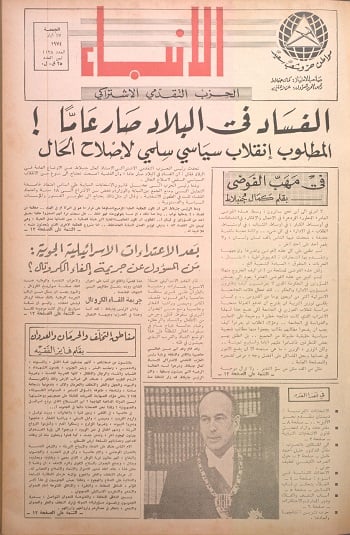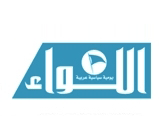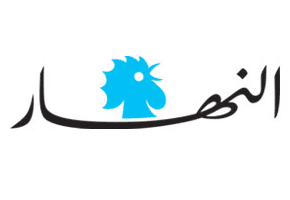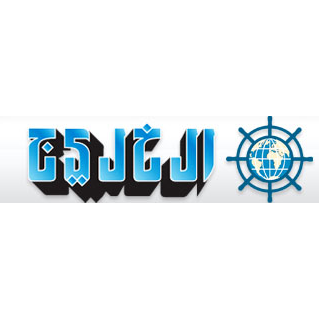Arab troubled transitions are normal
Rami G. Khouri
2 مايو 2013
Daily Star
As various countries across the Arab world navigate difficult transitions from former dictatorships to new forms of governance, much remains unclear in terms of exactly how much citizen participation and government accountability will prevail. Egyptians, Tunisians and Libyans are at the most advanced stages of this process, which takes place in slow, plodding manners that include both the sophisticated arguments of cosmopolitan constitutional lawyers along with the crude street confrontations of tribes, gangs and spontaneous gatherings of angry citizens. One of the reasons why this process is so cumbersome and laborious is that – as the past few years have clarified – the Arab world is undertaking this historic reconfiguration of governance systems while also grappling with two other, more fundamental, elements of their national experiences: the nature of statehood and of sovereignty. These issues are usually defined in the very earliest stages of nationhood, and then mildly adjusted in subsequent years. In the context of today’s Arab world, the political transitions being experienced in some countries provide the first ever opportunity for citizens to discuss and agree on the core elements of their statehood and nationhood.
Agreeing on the combination of these issues – statehood, nationhood, sovereignty and governance – comprises the classic definition of national self-determination. Arab citizens have never had the opportunity to undergo the thrills of national self-determination. This is because Arab countries and governing systems have always been defined either by foreign powers or by very small groups of family members or military officers who controlled the institutions of government. Ordinary men and women have never played any consequential role in defining and managing their statehood and nationhood. That is starting to change now in some Arab countries.
The transition is messy and slow in part because core issues remain largely undefined, including the most fundamental matter of how much power should be placed in the hands of the central government, and how much should be vested in the will of citizens or of non-governmental groups, such as tribes or ethnic-national minorities. The three non-Arab states in the region – Iran, Turkey and Israel – are robust in large part because they resolved these issues long ago, giving the central government real authority.
In the Arab world, central governments do not always enjoy such a clear monopoly over public power. The three transitioning states in North Africa are trying to agree on constitutional norms that would define how governmental power is achieved and exercised, while accounting for the interests and roles of citizens who are organized variously by tribe, gender, ideology, socio-economic status or region. In other countries, such as Lebanon, Syria, Iraq, Palestine and Yemen, a weak central government is constantly challenged by assorted nonstate actors whose power allows them effectively to share in the exercise of state sovereignty and authority.
This is institutionalized in some cases, such as in Lebanon where the Hezbollah-led faction in the government insists on having veto power over major decisions. This reflects the reality that Hezbollah acts as an autonomous military and socio-economic power in the country, much to the annoyance of many Lebanese. Hamas has carved out a similar role for itself in Palestine. In both countries, central governments enjoy only partial sovereignty because powerful groups such as Hezbollah and Hamas are able to wage war against Israel without consulting or relying on the assets of the central government.
In Iraq and Syria, slightly different situations pertain, mainly in the form of distinct regional political or ethnic-religious forces that challenge the central government, or seek autonomy from it in the extreme. Kurdish populations in both countries are one example of this, and another that may be coming into being comprises Sunni citizens who have directly challenged or even militarily fought the central government. Yemen continues to face the presence of armed groups like the Houthis in the north, as well as the secessionist tendencies of the southerners.
These and other examples suggest that the core elements of coherent, unified states remain elusive in some Arab countries. Yet it also remains unclear if this is a structural problem that has no solution, or whether it is merely a political problem that can be resolved through instituting democratic governance systems that allow all citizens to engage in collective decision-making.
We are likely to see both these options play themselves out. Some groups (Kurds, southern Yemenis) may secede from their present countries (as South Sudan did from Sudan) and others will remain within the existing state structure but protect their interests through democratic means.
It is easy to look at the Arab world today and decry the messy and violent conditions that prevail in many war-torn societies, but we should also be fair in recognizing that this is also because some Arab countries are still in the early stages of defining themselves as sovereign countries. That process in other countries has often included civil wars that were a means of defining the permanent identity of the state, including relationships among different groups within the country. We see hints of this today in some Arab countries.
 عن أمل جنبلاط المتجدد: لبنان يستحق النضال
عن أمل جنبلاط المتجدد: لبنان يستحق النضال
 صحافيون أم عرّافون!
صحافيون أم عرّافون!
 ماذا يجري داخل أروقة بيت الكتائب المركزي؟
ماذا يجري داخل أروقة بيت الكتائب المركزي؟


 عن الخرائط التي تُرسم والإتفاقات التي تتساقط!
عن الخرائط التي تُرسم والإتفاقات التي تتساقط!
 “الإنحراف في الحياة”/ بقلم كمال جنبلاط
“الإنحراف في الحياة”/ بقلم كمال جنبلاط
 هاشتاغ #صار_الوقت يحل أولاً في حلقة جنبلاط
هاشتاغ #صار_الوقت يحل أولاً في حلقة جنبلاط
 طاولة نقاش عن أزمة الصحافة في جامعة AUST
طاولة نقاش عن أزمة الصحافة في جامعة AUST
 عبدالله: ليظهر لنا وزير مكافحة الفساد حرصه في صفقات البواخر والفيول
عبدالله: ليظهر لنا وزير مكافحة الفساد حرصه في صفقات البواخر والفيول
 عبدالله: غريب أمر وزارة مكافحة الفساد!
عبدالله: غريب أمر وزارة مكافحة الفساد!

 Comment to Uri Avnery: How Sad What Is Looming Ahead
Comment to Uri Avnery: How Sad What Is Looming Ahead
 “Not Enough!”
“Not Enough!”
 … لمن لم يقرأ يوسف البعيني/ بقلم وسام شيّا
… لمن لم يقرأ يوسف البعيني/ بقلم وسام شيّا
 كمال جنبلاط في مولده الأول بعد المائة: تعاليمه وأفكاره ما زالت الحلّ/بقلم عزيز المتني
كمال جنبلاط في مولده الأول بعد المائة: تعاليمه وأفكاره ما زالت الحلّ/بقلم عزيز المتني
 رئيس حزب/ وليس (… سابقاً)/ بقلم د. خليل احمد خليل
رئيس حزب/ وليس (… سابقاً)/ بقلم د. خليل احمد خليل
 التوازن السياسي في لبنان
التوازن السياسي في لبنان
 لبنان… مشاريع انقلابية مؤجلة
لبنان… مشاريع انقلابية مؤجلة
 جنبلاط وحَمَلة أختام الكاوتشوك
جنبلاط وحَمَلة أختام الكاوتشوك
 Le Liban est un symbole de tolérance
Le Liban est un symbole de tolérance
 Our Automated Future
Our Automated Future
 The True Origins of ISIS
The True Origins of ISIS
 Les Misérables vs. Macron
Les Misérables vs. Macron
 عذراً أيها المعلم/ بقلم مهج شعبان
عذراً أيها المعلم/ بقلم مهج شعبان
 رساله الى المعلم / بقلم ابو عاصم
رساله الى المعلم / بقلم ابو عاصم
 إلى روح القائد والمعلم كمال جنبلاط/ بقلم أنور الدبيسي
إلى روح القائد والمعلم كمال جنبلاط/ بقلم أنور الدبيسي
 أسرار وعناوين الصحف ليوم الجمعة 14 كانون الاول 2018
أسرار وعناوين الصحف ليوم الجمعة 14 كانون الاول 2018














